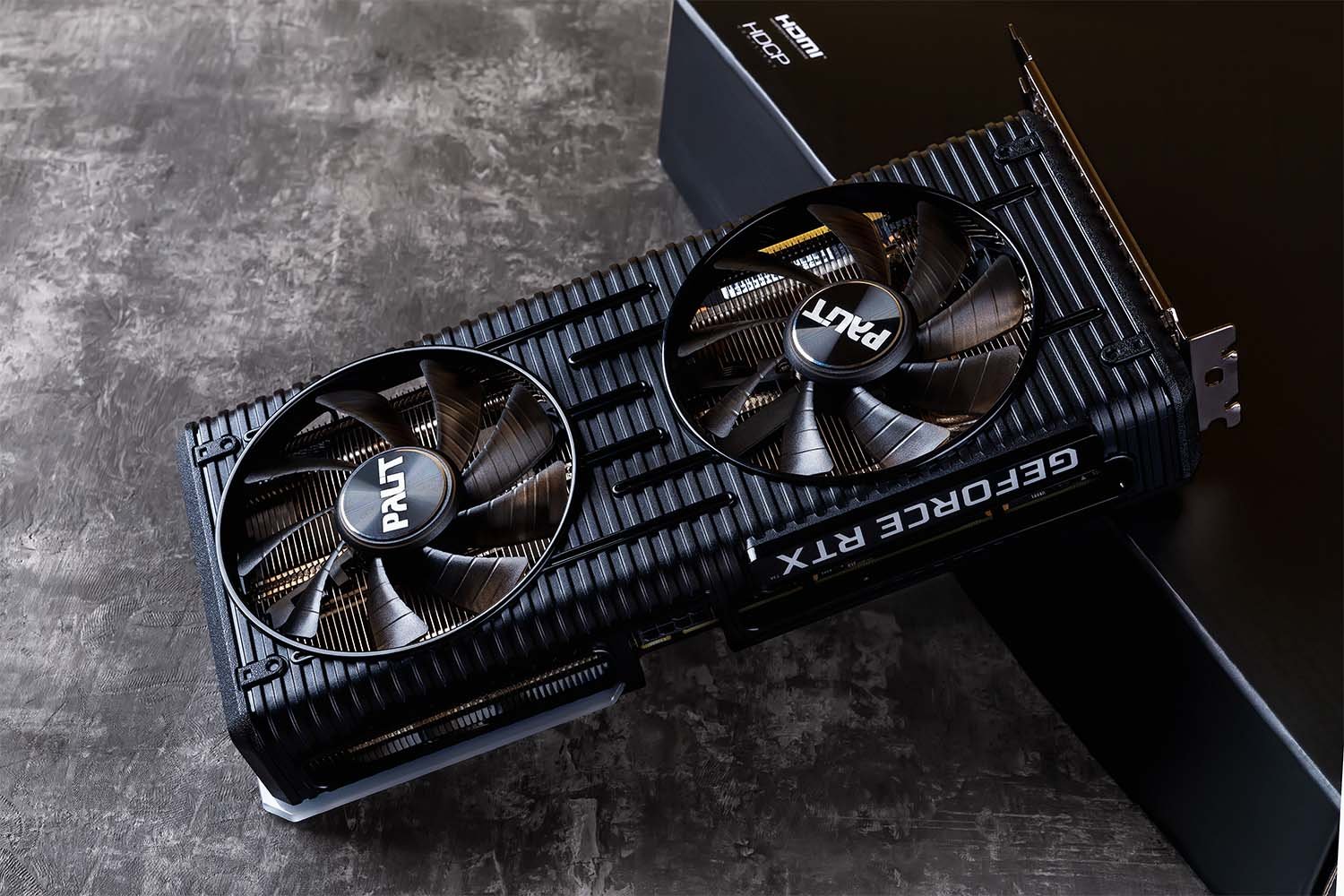Nvidia Geforce RTX 3060 vs the 3060 Ti: Is It Worth the Upgrade?
In any given line, in any given generation, you’re bound to find graphics cards with similar capabilities. This can immediately be seen in NVIDIA’s line of graphics cards. WTFast will be comparing how the RTX 3060 and RTX 3060 Ti stack up against each other so that you can find the right card for your build.
Why You May Want to Upgrade Your Graphics Card
We plan on comparing two types of graphics cards today. However, we have to compare them with your goals in mind.
First, we’ll examine if it’s worth it to purchase a 3060 Ti as a strict upgrade to the RTX 3060. This example assumes you already have an RTX 3060 in your build. We’ll be trying to justify the benefits the 3060 Ti has under the lens of buying a new graphics card.
The second case will assume that you are generally in the market for a new graphics card. Here, the two cards will be more fairly compared regarding the benefits of the 3060 Ti.
Both scenarios require us to examine in depth the nature of these two cards to help you figure out exactly what you need.
Background Information
When comparing the Nvidia Geforce RTX 3060 and the GeForce RTX 3060 Ti, it might be helpful to examine their release dates. Nvidia usually releases standard and improved versions of a graphics card over time. The improved version usually has Ti or Super in the name to show that it’s the next in line.
These two graphics cards are unique because the improved version was released before the standard version.
The 3060 Ti was released in Q4 2020, while the RTX 3060 was released late in Q1 of 2021. These pieces both hold special places in the 3000 line of graphics cards. The line as a whole signifies some of the best high-end graphics cards on the market. The two we’re comparing signify Nvidia’s attempt to create an affordable-yet-ultra-powerful graphics card.
This affordability is seen in MSRP, though anyone who’s built a PC will tell you MSRP is a dream price. The RTX 3060’s MSRP is $329, while the 3060 Ti’s MSRP is $399. Getting a quality graphics card for anywhere near that price is a rarity. The low MSRP has created high demand in secondary markets, so availability is usually low.
One place that usually sells at (or at least close to) MSRP is Best Buy, which also exclusively sells Founders edition cards. These augment and outfit the card the way Nvidia intended, resulting in close-to-ideal performance.
In practice, don’t expect to see a founders edition card. Also, don’t expect to see these chips for sale without adding at least one-two hundred dollars to the MSRP.
We’re no longer in the depths of the graphics card shortage, but the shortage is still raging on.
The Construction
The GeForce 30 series uses Ampere architecture, first announced in mid-2020. The end of that calendar year saw the announcement of the RTX 3060 and mobile GPUs. Ampere is currently the most up-to-date form of Nvidia microarchitecture, though its successor has already been announced.
GeForce 30 series GPUs feature Tensor cores and better ray tracing compared to their predecessors. The upper levels of the series feature GDDR6 memory, specifically designed for the high bandwidth use of gaming PCs.
The 3060 uses 12GB GDDR6 memory, connected using a 192-bit memory interface. The core clock speed (which affects the memory bandwidth) is 1320 MHz, with a boosted clock speed of 1777 MHz. By comparison, the 3060 Ti uses 8GB GDDR6 memory and a 256-bit memory interface. It features a better base clock speed of 1410 MHz but a boost clock speed of only 1665 MHz.
This difference in VRAM and clock speed may already be the deciding factor for some users. Both pieces are powered by CUDA cores, with the RTX 3060 having a lower power consumption. Both pieces — regardless of wattage — completely surpass last-gen cards like the RTX 2080.
The Nvidia GeForce RTX 3060 TI has a single HDMI 2.1 port and three DisplayPort 1.4a ports. The same holds true for the RTX 3060. Some may miss the presence of USB-C and other ports, but this isn’t a terrible loss. Each is still capable of supporting up to four displays.
The specs of both the 3060 and the 3060 Ti are both impressive. However, the individual specs only tell you so much about a machine and do little to actualize its abilities.
The Benchmarks
The best way to tell how a graphics card performs is by gathering data for ourselves to highlight its performance. Gaming performance is hard to innately gauge, as everyone has their own unique setups. If your GPU outstrips your CPU too much, it can result in bottlenecked graphics. Benchmark tests provide the most effective understanding of how a graphics card operates in the real world.
The RTX 3060 and RTX 3060 Ti both consistently reach north of 60FPS in the realm of 1440p gaming. In-game, however, the higher VRAM of the RTX 3060 is somewhat wasted.
Both can reach 4K gaming at entry-level but aren’t quite strong enough to maximize all settings. If you want to play a complexly rendered game like Cyberpunk 2077, Elden Ring, or COD, you’ll have to downgrade.
Lowering your graphics isn’t a necessary compromise. Most graphics cards today are optimized for 1080p displays. Even reaching 1440p is a win in the world of gaming performance, and both achieve this with excellence.
If you want to optimize your graphics, you may eventually have to lower some other metrics. Outside of that, you may need to simply accept a lower-than-average framerate. Lower FPS is a definite issue that will need solving in online gaming but may be fine for single-player experiences.
Under all performance metrics, the 3060 Ti beats out the RTX 3060. It is capable of running entry-level 4K games at a baseline acceptable frame rate. Its speed at processing lighting and graphical effects is significantly better, by a self-reported margin of 30 to 40%. The only major deficiency it has is the price.
The Comparison
We promised to highlight and compare the 3060 Ti and RTX 3060 under two scenarios. In one, you are looking to upgrade to the former from the latter. In the other, you are choosing between these two items.
From the perspective of pure power, the former is the winner. The 3060 Ti has better ray tracing, better processing speed, and better complexity of rendered graphics. The one place it falters is only having 8GB of VRAM. Despite this, the RTX 3060 is not quite powerful enough to use its extra 4K.
Both of these graphics cards are high-end but not quite at the top of current Nvidia offerings. If you want a reliable 4K graphics card, opt for the higher-priced RTX 3070, RTX 3080, or RTX 3090.
If you are still using a GeForce 20 series card like the RTX 2060, either piece will be impressive. Both of these — thanks to new architecture and powerful cores — are exceptional at what they do.
The only potential pain point is the price. Both of these, theoretically, should be affordable options to help gamers get better performance. Unfortunately, it’s more than just gamers who are buying up graphics cards.
Cryptominers are buying graphics cards to help power their mining builds, which take items out of circulation for gamers. This also contributes to the wider graphic card shortage affecting prices for AMD, Nvidia, and more. Nvidia has taken efforts to limit hash-rates, but some hackers have found ways around these efforts.
If you want a competitive graphics card, you’ll have to pay the market price. For the RTX 3060, that price is currently hovering around 500 to 600 dollars. For the 3060 Ti, a quick search reveals a price of around 580 to 700 dollars.
The Decision
If you already have the RTX 3060, don’t spend your money on the 3060 Ti. The market for used graphics cards is also bustling, and for that reason, you may sell them once you’ve upgraded. If you’re going to spend nearly 700 dollars on a graphics card, you should at least get a significant upgrade.
Go for an absolute top-of-the-line piece if your build calls for it, and save yourself the need for upgrades later. A current high-powered piece will stay current for years to come.
If, however, you need a new graphics card, choose the 3060 Ti. The extra investment leads to commensurate rewards in terms of performance.
Of course, AMD offers its own similar options like the AMD Radeon RX 6600 as well, so your options aren’t just limited to these two cards if you’re not convinced either way. Don’t forget to zhuzh the rest of your gaming setup as needed to get the most out of these cards, like getting a motherboard that’s perfect for your GPU or using a route optimizer to seriously reduce your ping.
WTFast makes it our mission to improve gaming in any way we can. From detailed comparisons to enhancing online gameplay with our Gamers Private Network, we do everything we can to be a gamer’s secret weapon.
Sources:
Nvidia RTX 3060 vs 3060-Ti I UserBenchmark
Nvidia Hackers Are Selling Software to Bypass Ethereum Hashrate Limiter I CoinDesk
How to build a budget gaming PC | Carolina News and Reporter


